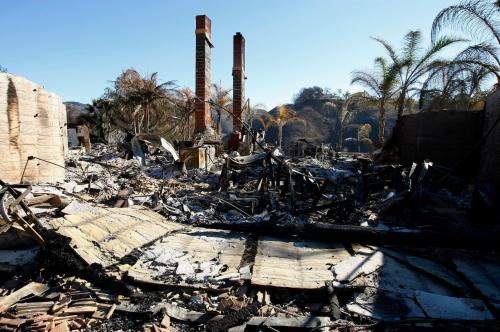The low-key relationship between Canada and the United States goes into overdrive for a few days with the arrival of Prime Minister Justin Trudeau in Washington for a state dinner and loads of photo ops.
The American capital is suddenly filled with questions about Canada. Is Trudeau another Obama, riding an early wave of charisma but destined for a rapid transition to gridlock and gray hair? What celebrities will attend the dinner? And are Brian Calvert’s Canada Party videos about Canadians considering a Trump-like wall along its border (a kind of reverse Scott Walker) with the U.S. serious?
Clearly, these leaders liked each other from the very start of their relationship and past experience suggests that this can lead to serious policy engagement. Think of Brian Mulroney persuading Ronald Reagan to shift his position on the Arctic via a chat while perusing a globe.
Then think of how badly things can go when there is no chemistry, as in Obama’s dealings with the likes of Trudeau predecessor Stephen Harper or, far worse, Benjamin Netanyahu.
So this has some potential and there is plenty that a chummy up-and-coming Trudeau and a lame-duck Obama might consider between courses, particularly at those likely points of intersection between the two countries on matters of climate change, water, and infrastructure. Here is a sampler of options:
Climate
Climate change has been a messy problem for both of these fossil fuel-centered energy superpowers. Both have struggled mightily to develop any kind of carbon pricing strategy on a national basis and must deal with a vast range of reactions from various states and provinces on all aspects of this issue. Trudeau’s early efforts to forge a cross-provincial compact on climate have been met with significant resistance and Obama’s climate legacy likely hinges on the November election and (surviving that) an eventual Supreme Court decision where more than half of the states seek reversal.
But methane may offer some real opportunity for cross-border collaboration, not just with some ambitious emission-reduction target but a joint plan of action. The recent death of shale entrepreneur Aubrey McClendon serves as a reminder of the explosive growth of fracking and how it has changed the North American energy landscape. This includes some significant economic and national security gains but also a series of environmental challenges linked to shale development.
The long-overlooked issue of methane figures increasingly in drilling extraction in both nations, reflecting sloppy practices and wasteful releases that have largely escaped regulation or taxation. North Dakota serves as a national poster child for this issue in the United States, with staggering methane loss rates that continue to defy various regulatory fixes proposed in Bismarck. And provinces like British Columbia, despite its carbon tax badge of political courage, largely exempt methane from oversight given their expanding efforts to increase natural gas production. So methane becomes a low-hanging fruit on the climate file that might well be ripe for coordinated cross-border strategies at a point where production surges have eased given price plunges.
Water
It might have been assumed that Canada and the United States resolved any issues in water governance more than a century ago with the Boundary Waters Treaty. This remains a signature achievement of the Wilfrid Laurier and Theodore Roosevelt era but there is no better moment to reconsider all dimensions of water supply protection than the present. The tragic legacy of drinking water contamination in Walkerton, Ontario, in 2000 looms large over Canadian water policy to this day. Just as Flint, Michigan will long be synonymous with these challenges in the United States.
Both nations have significant track records in this area but face enduring challenges to protect a resource that tends to be so abundant in many parts of their territory that it is regularly taken for granted. Great Lakes stewardship for this century clearly comes into play as do the numerous other dimensions of water policy and infrastructure that make sense to address on a cross-border basis.
Infrastructure
Trudeau might give a primer to the President (and Congress) on how to take seriously issues of transportation and security across the vast national border. The American lag in this area remains astounding, perhaps most evident in the long-overdue creation of a new crossing at the heavily-travelled connection between Detroit, Michigan, and Windsor, Ontario.
In this instance (with other parallels), Canada is essentially bailing out the United States and covering the bulk of the costs to replace a woefully-inadequate bridge that was deemed cutting edge during the William Lyon Mackenzie King and Herbert Hoover era of Canadian-American relations. Both nations continue to have their infrastructure challenges but Canada has clearly been doing the heavier lifting on this in recent years, often negotiating with state governors rather than Presidents, federal agencies, and Congress.
At the very least, President Obama should pick up the tab on any meals, in thanks for that continuing support. He might also make sure that any Canadian wall along the American border has lots of those “big beautiful doors” that Donald Trump keeps proposing for the South, as America continues to depend on its oft-ignored neighbor in what remains one of the most durable and robust cross-national relationships in the world.
The Brookings Institution is committed to quality, independence, and impact.
We are supported by a diverse array of funders. In line with our values and policies, each Brookings publication represents the sole views of its author(s).




Commentary
Mr. Trudeau comes to Washington with opportunities for Mr. Obama
March 9, 2016